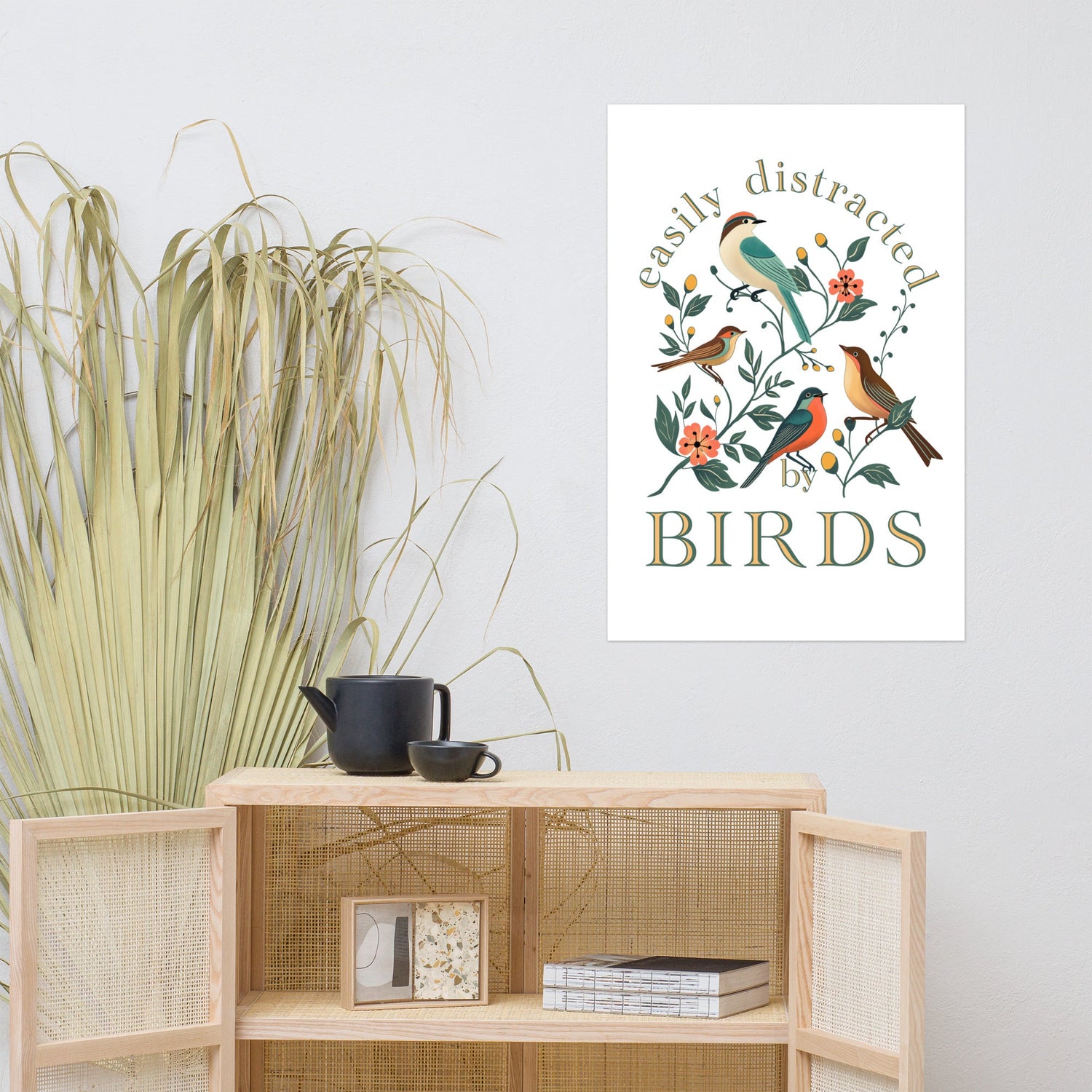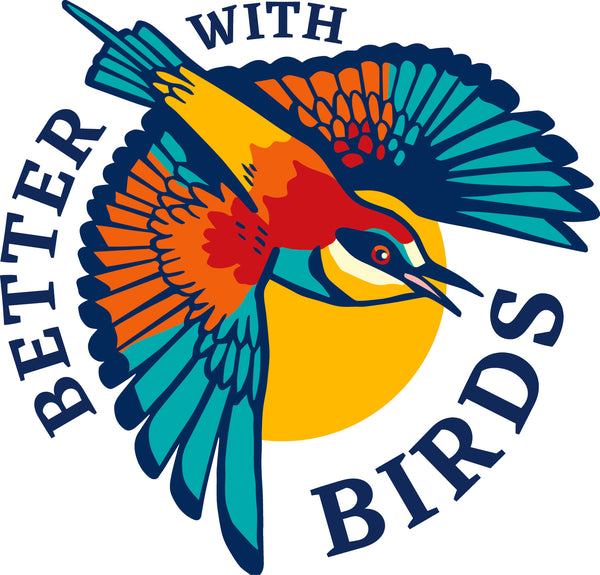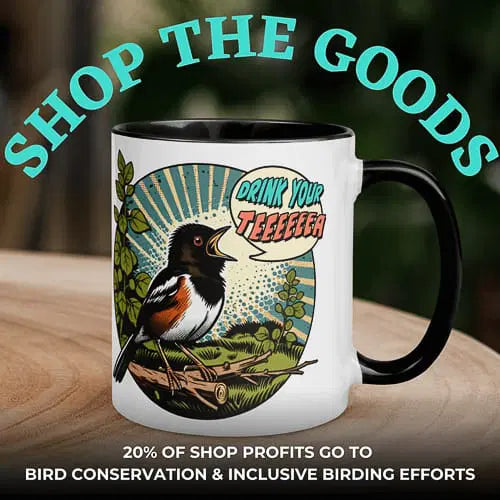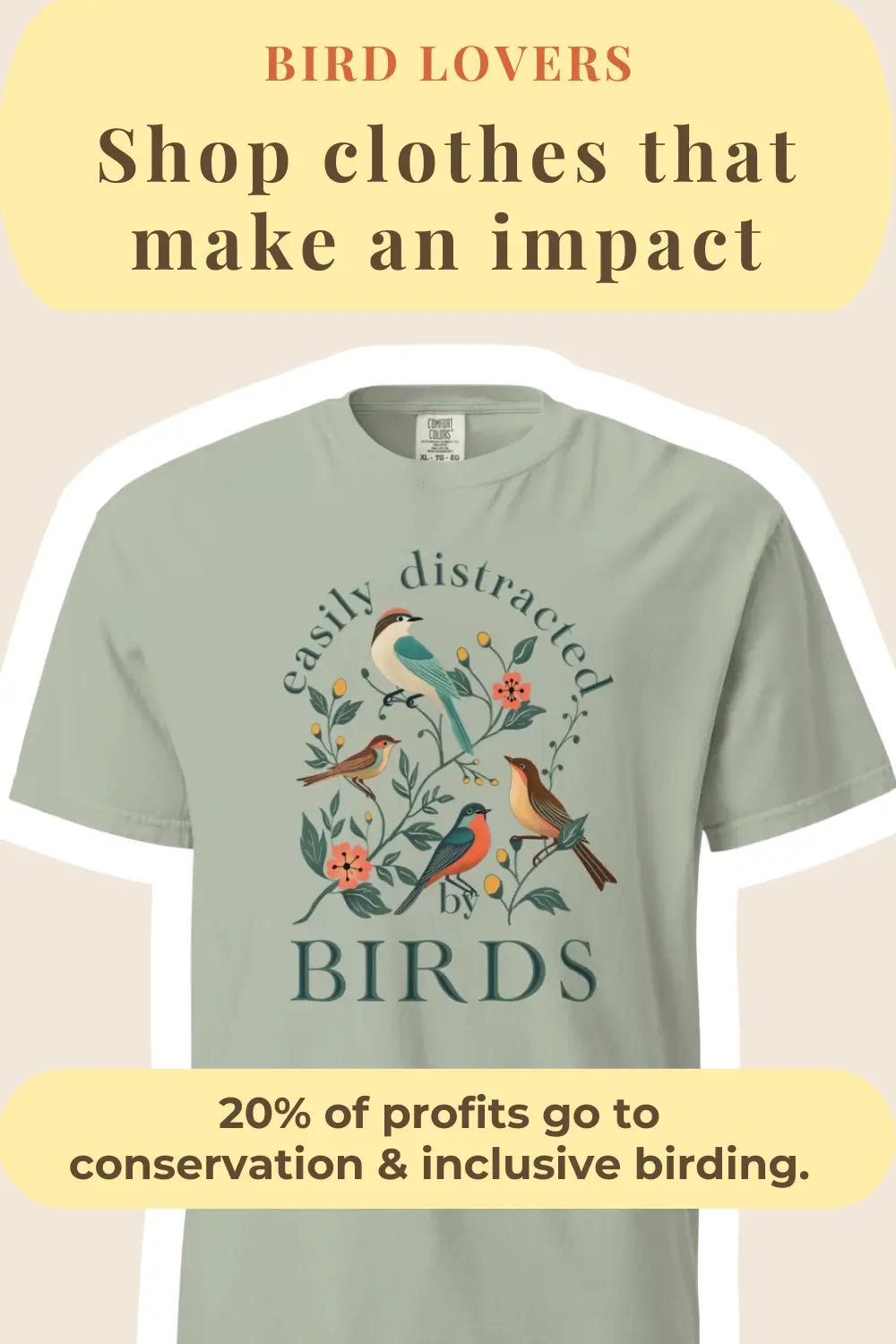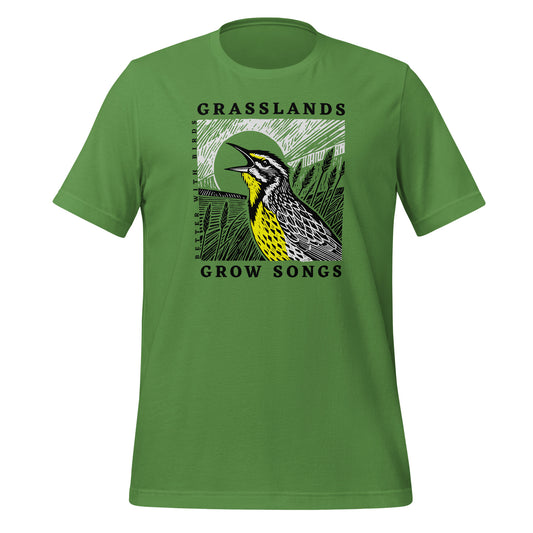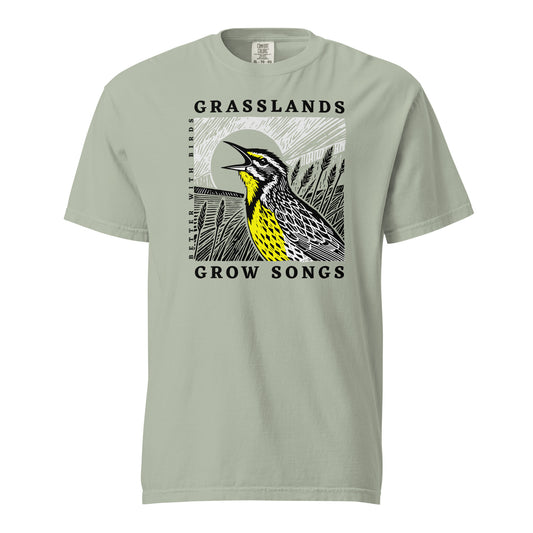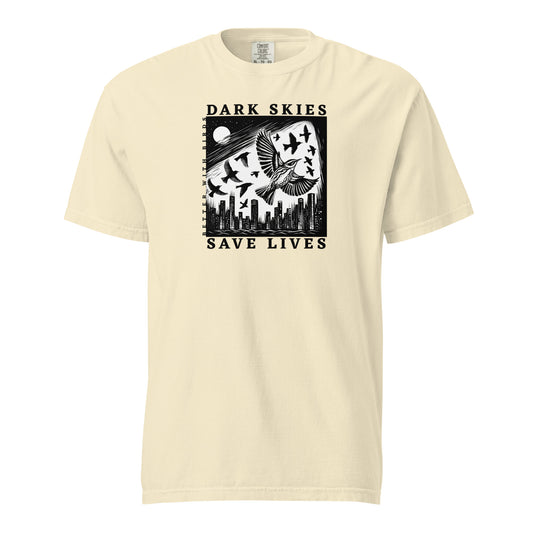Bird Journaling for Beginners: What to Write, Sketch & Track
Photos by Jaymi Heimbuch
Read Timte: 6 minutes
Backyard Birding , Journaling

This post contains affiliate links. If you use these links to buy something, we may earn a commission at no additional cost to you. We only recommend products we fully support or use ourselves. Our full disclaimer
PIN THIS FOR LATER

Contents
Bird journaling sounds serene, right? You, a notebook, a few birds doing their thing—and suddenly, you're the Jane Goodall of your backyard. But then you crack open the journal and realize... you have no idea what to put on the page.
This guide is here to fix that. Whether you’re starting your first bird journal or upgrading from “scribbled-on napkin,” we’re breaking down exactly what to write, sketch, and track—so you can stop staring at a blank page and start actually enjoying the nerdy joy of birdwatching.
Why Start a Bird Journal, Anyway?
Before we dive into the nuts and seeds, let’s answer the obvious question. Why bother bird journaling?
Because it helps you:
- Remember which bird was actually a female red-winged blackbird and not “just a brown bird”
- Notice patterns—like which birds show up only when you forget your camera
- Calm the heck down and connect with nature
- Build a pretty sweet record of your birding adventures, especially if you’re dabbling in backyard conservation
Also, it makes your walks feel 14% more like National Geographic documentaries. Win-win.
What to Write in Your Bird Journal
You don’t need to write like you're submitting to Scientific American. You’re just documenting observations, behaviors, and thoughts. Keep it simple, stay curious, and write like future-you might want to look back on this stuff.
The Basics (Good Every Time)
-
Date and Time
Classic. Essential. Helps with seasonal pattern tracking. -
Location
Be specific—park name, trail, backyard, that one weird tree by the gas station. -
Weather Conditions
Windy? Cloudy? About to storm? Birds behave differently depending on the weather.
The Birdy Details
-
Species (or your best guess)
No shame in writing “small round chirper, possibly annoyed.” You’ll get better with ID over time. -
What It Was Doing
Feeding, preening, harassing the chickadees, doing backflips—you get the idea. -
Sounds
Was it calling? Singing? Screaming into the void like the rest of us?
Your Reactions & Questions
- What surprised you?
- Did it remind you of something weird or funny?
- Any questions you want to Google later?
This turns your bird journal from a science log into something personal and fun. Don’t skip it.
We give 20% of all shop profits to bird conservation & inclusive birding efforts.

What to Sketch (Even if You Think You Can’t Draw)
Look, your sketch doesn’t need to belong in a museum. This is about observation, not art awards.
Sketch Ideas to Try
-
The Bird’s Shape and Posture
Especially useful for ID later—jot notes like “chubby with a punk rock crest.” -
Beak Shape
A tiny detail that can really help narrow down the species. -
Feet and Legs
Tree-clingers? Waders? Ninja toes? Draw what you see. -
Behavioral Sequence
Quick doodles showing what it did (perch, hop, scream, fly off).
Pro tip: keep a pencil and eraser handy. Or don’t. Embrace the mess.

What to Track Over Time
If daily entries are the snapshots, long-term tracking is the photo album. This is where patterns emerge, insights appear, and suddenly you’re like, “Wait... this mourning dove always shows up five minutes after I refill the feeder.”
Here are the key things to keep your binoculars on and track regularly:
Seasonal Bird Arrivals and Departures
Birds don’t consult calendars, but they do follow light, temperature, and food availability—and those cues shift with the seasons.
- Migration windows: Note when certain species first show up in spring or disappear in fall. These trends help you predict their arrival next year (and look super cool to other bird nerds).
- Breeding behavior: Watch for shifts in songs, nesting material gathering, or outright squabbles over prime real estate.
- First fledglings: That glorious moment when baby birds pop out, confused and slightly chaotic. Worth noting every time.
This is basically building your own personal bird-based version of the Farmer’s Almanac.
Feeder Activity & Food Preferences
Treat your feeder like a diner and keep tabs on your regulars.
- Who’s showing up, and when: Is there a morning rush hour? A twilight crowd?
- What they’re eating: Sunflower seeds, suet, mealworms—who’s picky and who’s a garbage disposal?
- Feeder drama: Which birds are bullies, and who’s always getting shoved off the perch?
This info helps you tweak your setup to attract more of the birds you want—and maybe fewer of the ones who act like tiny feathered gremlins.
Nesting & Local Territory Claims
Backyard birds are territorial little soap opera stars.
- Where they’re nesting: Keep a rough map of locations (especially helpful for cavity nesters like chickadees or bluebirds).
- Who’s nesting: Species, pair behavior, how many visits a day they make to the nest.
- Success/failure: Did the eggs hatch? Did anything tragic or dramatic happen? Nature isn’t always gentle, but it is informative.
If you’ve got a camera or binoculars near a known nesting site, this section becomes wildly fun and educational to track.

Vocal Activity
Yes, you can track sound, and it’s weirdly satisfying.
- First songs of the season: Especially fun in early spring when birds are basically screaming “I’M SINGLE!” from the treetops.
- Changes in calls: Some birds have different calls for alarm, food, or social chatter—note these variations if you catch them.
- Mimics: If you’ve got mockingbirds, catbirds, or starlings, tracking what they imitate is like collecting easter eggs from your local bird DJ.
Bird Health & Odd Behavior
This one’s important and often overlooked. Keeping notes on unusual behavior can help spot environmental shifts or disease outbreaks.
- Molting periods: Looking a little raggedy? Probably molting. Track it.
- Limping, drooping wings, crusty eyes: Might indicate illness like avian conjunctivitis or other issues. (If that's the case and you have feeders up, pull them down and give them a serious cleaning. Avoid putting them back up for at least a few weeks.)
- Aggressive or bizarre behavior: A blue jay divebombing the cat every day at 3 PM? Note it. (And maybe get video.)
Your log might even help local wildlife organizations if patterns of concern emerge.
Repeat Visitors & “Regulars”
Yes, it’s possible to start recognizing individual birds—especially bold backyard regulars or birds with unique markings.
- Give them names: Totally optional, but highly encouraged.
- Track their quirks: One-legged crow? Robin who bathes at 2 PM? This is where their “character development” goes.
This isn’t just fun, it’s a legit way to build a deeper connection to the birds in your area. And it makes your journal feel like it has characters—because it does.

Do I Have to Draw in Order to Keep a Bird Journal?
Short answer? No. Long answer? Still no, but with more sass.
Drawing is one way to observe and remember what you’re seeing, but it’s not a requirement. You don’t have to channel your inner Audubon to keep a meaningful bird journal. You don’t even have to doodle a single stick-bird if that’s not your thing.
Here’s the deal: bird journaling is about observation, not artistry.
If you're a visual thinker or just love sketching, go for it—bad drawings welcome. Seriously. Draw that weird goose like it’s a potato with wings. No judgment. But if the thought of putting pencil to paper makes you break into a sweat, skip it. Use words. Use color codes. Use printed photos. Use voice memos transcribed later. You can even log entries digitally if you’re more of a tablet-than-paper person.
The only thing you have to do is pay attention. That’s it. Bird journaling is not an art contest, it’s your brain learning how to see better. However you get there? Totally valid.
But if someday you do feel inspired to try drawing that suspiciously smug-looking jay... you’ll be surprised how fun it is, even when it turns out looking like a lopsided pineapple.
Make It Pinterest-Worthy (Optional but Fun)
We’d be lying if we said aesthetics don’t matter here. One of the fun things about keeping a bird journal is the scrapbooky vibe it can bring to your birding life.
Add These to Your Journal for That Visual Pop
- Washi tape to separate entries
- Pressed leaves or feathers (found legally and ethically, of course)
- Tiny Polaroids or printouts of your sightings
- Color-coded tabs for seasonal entries
You don’t need this stuff, but if it makes journaling feel more fun, go wild. Just remember: perfection is not the point. Birds sure don’t care.
Final Thoughts
Your bird journal is yours. You can go full-on data scientist, channel your inner bird poet, or just scribble “blue jay yelled at squirrel again” every morning with your coffee. It all counts.
Bird journaling makes you a better observer, a more mindful human, and, let’s be honest, gives you a solid excuse to buy more notebooks. Start where you are. Write what you notice. Sketch the ridiculous. You’ll be amazed at what unfolds over time—no fancy degree required.
